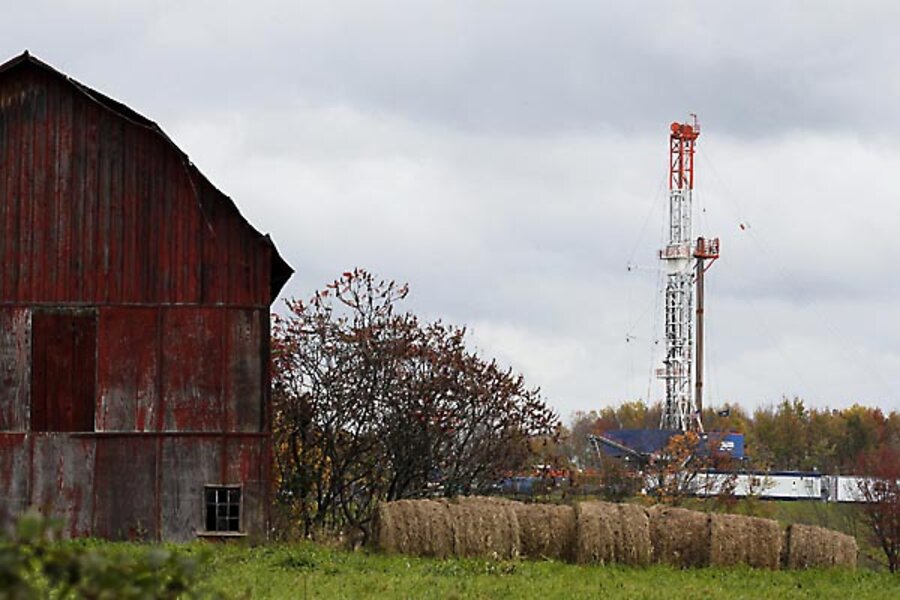How to reap the rewards of the shale gas boom
Loading...
Unique Energy Opportunity if Smart Policies Continue
In the early part of 2008, I began delving into the big story of the day in North Texas and Dallas, the prolific activity from the recovery of natural gas in the Barnett Shale. At the time, other shale plays were being explored as well, such as the Fayetteville play that confirmed the Barnett’s results; the Marcellus was just being sized up. I was challenged with attempting to figure out how to communicate what shale could be physically described as — in essence, a dead ocean from a geologic perspective.
Three things came together that gave tailwinds to today’s “shale revolution.” One was that the government stepped out of the way after many decades of nearly regulating natural gas out of existence. It had created artificially low gas prices, which killed production and confidence in the market until the 1980s and ’90s. The second force was the entrepreneurial spirit in oil and gas exploration, which presides in Texas. A powerhouse of expertise exists here, and these newfound unconventional gas production techniques and know-how spread to the rest of the country and the world. For producers, it was their Google moment.
And finally, technological advances in drilling technology —hydraulic fracturing and horizontal drilling— combined in the Barnett with independent producers’ experimentation, the innovators like Trevor Rees-Jones of Chief Oil and Mitchell Energy. Their efforts, and those of other operators in the 1980s and ’90s, paved the way for the U.S. gas revolution and its ripple effects across the globe. It was the right combination of economics, opportunity and efforts coming together.
Fast forward and there are now 70 shale plays in the U.S. across five major producing regions. The U.S. is thought to have 1,161 trillion cubic feet (tcf) of technically recoverable shale gas resources, according to a May 2013 report from the Energy Information Administration. The Barnett was estimated to hold 39 trillion cubic feet (tcf) of gas around 2006, with remaining reserves estimated at 72 tcf. The Marcellus shale, the largest unconventional gas resource in the U.S., is estimated to have 369 tcf, by comparison. The U.S.consumed roughly 25.5 tcf in 2012.
The fortunate producers with their claims already staked in plays shifted as early as 2009 to complementary oil extraction in Texas’ Eagle Ford formations and then North Dakota’s Bakken, owing to better prices for oil production. Pricing has been more economically beneficial for the shale producers in the markets for oil and natural gas liquids (NGL) relative to natural gas. While the rig count has declined in natural gas production in some areas, owing to low prices, the future looks better for producing firms for several reasons:
• Prices will rise. Policy, ie., regulation that addresses environmental and social impacts, is expected to increase costs of production by 7%, according to a OECD/IEA World Energy Outlook report of 2012. The costs of producing have also increased with demand from oil and gas services firms rising steadily upward.
• Growth and energy demand in the developing world will continue, and inflation across many commodities will follow.
• Advanced economies will continue to use more natural gas in their energy mixes in power generation and transportation. Developing countries will leverage their capacities to increase the use of natural gas as well. The price of carbon could also incentivize movement towards natural gas consumption and switching from more carbon-intensive energy sources. Industrial firms and power generation firms will be more sensitive to the evolution of carbon pricing.
• Traditional ‘regional’ pricing differentials across the globe will narrow slightly. Even though gas is priced differently in the U.S., Asia, and Europe, there is mounting evidence for U.S. natural gas prices to influence the others. This has already occurred with Japan seeking supply alternatives from its higher-cost trading partners. Demand from heavy gas importers (liquified natural gas) such as Japan and China are navigating and approaching the LNG market differently in this gassy environment. China has a large natural gas resource base it will be exploiting in the years ahead.
In this current energy meta-narrative, the increased role for natural gas consumption is obvious. How the economics for gas production plays out is another story for another day. Smart government policies can play a positive role so society benefits from this once-in-a-century boon. Financial players and firms need proper signals to make the most sensible investments. As a society with other outsized problems like fiscal, political and environmental challenges, we really cannot afford to miss this opportunity offered by an abundant resource that provides multiple solutions. The production of natural gas can be done with respectful consideration of all stakeholders.







